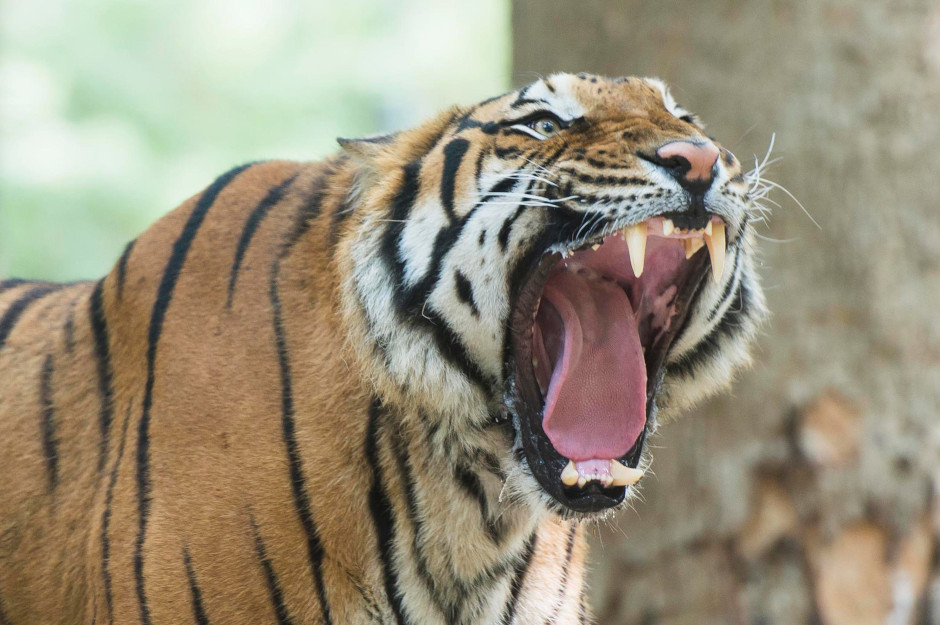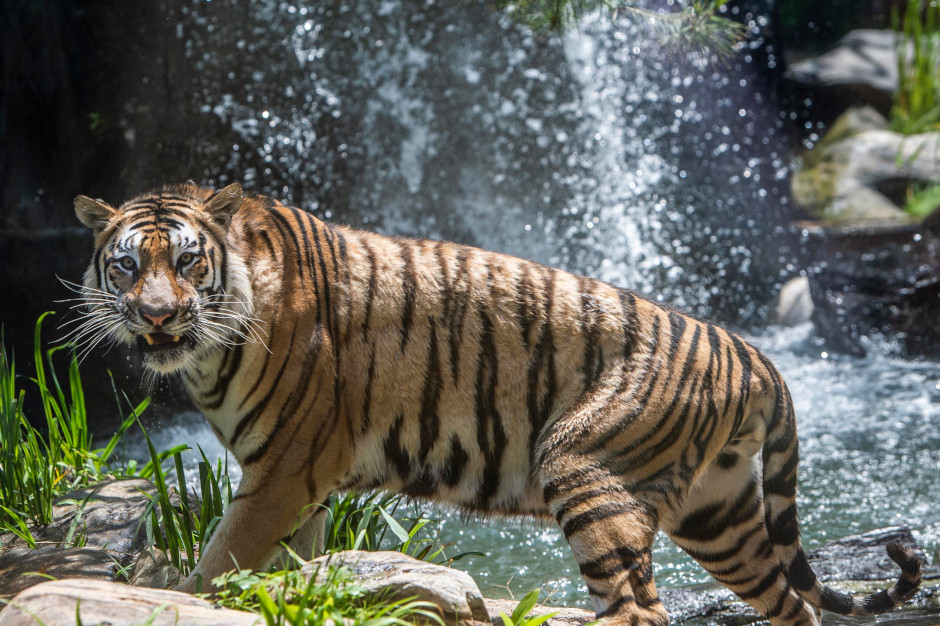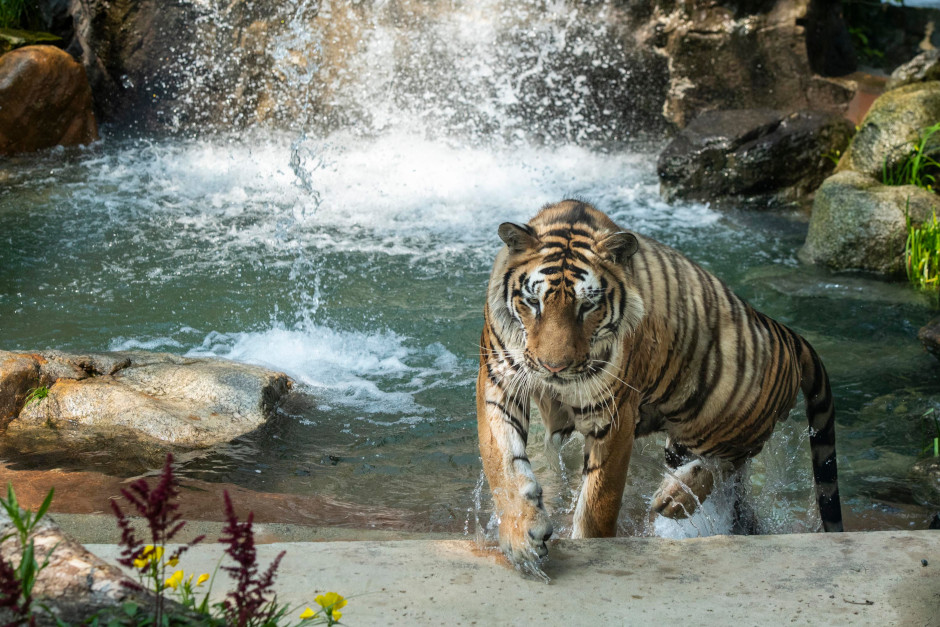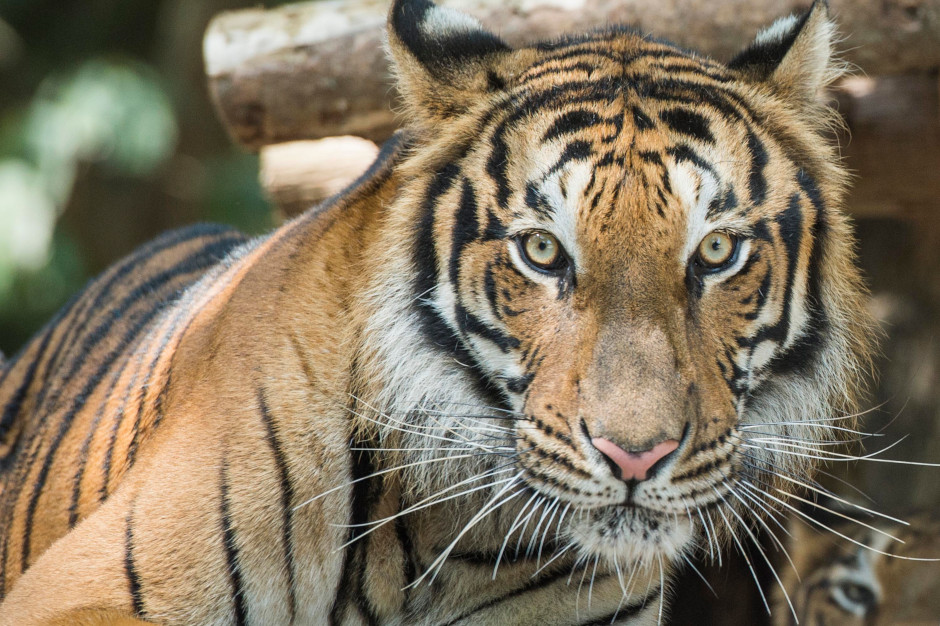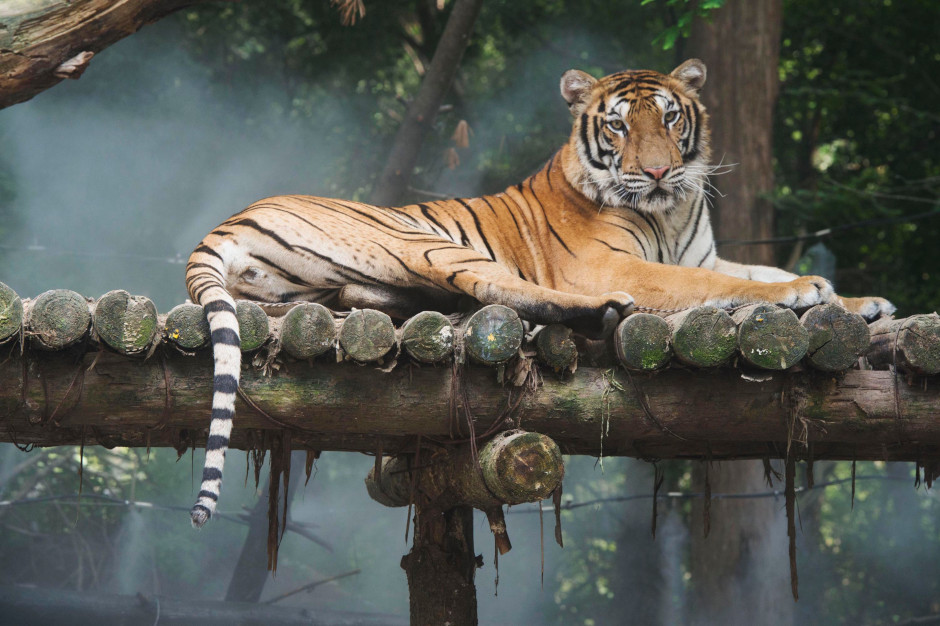It is a special day for tigers worldwide, as International Tiger Day is celebrated every year on July 29. Created in 2010, the occasion aims to raise conservation awareness.
After a century in decline, wild tiger numbers are on the rise and estimated to have reached around 3,900 according to the World Wide Fund for Nature (WWF). But the conservational organization, known in the United States and Canada as the World Wildlife Fund, also insists that tigers are “still in crisis” in much of Southeast Asia. Hunting and loss of habitat pose grave dangers to tigers, as just 7 percent of their original range is still available to them.
Thankfully, zoos and nature preserves have helped to protect tigers as well as lead education efforts concerning their endangered status. Among them is Tiger Valley at the Samsung C&T-operated Everland theme park in South Korea, a country that considers the tiger a national symbol. Even more love for this magnificent creature – the largest of the cat species – can help it roar back to its former glory.
Panthera tigris, the scientific name for tigers, is made up of various subspecies. The largest of these is often referred to as the Siberian tiger, which can grow up to 3.3 m long and weigh 300 kg. At the other end of the spectrum, the Sumatran tiger can weigh as little as 74 kg.
So, larger subspecies are known to live in colder regions of Northeast Asia, while their smaller counterparts can more often be found in warmer countries in Southeast Asia. Across these areas, tiger habitats range from tropical to evergreen forests, and from mangrove swamps to savannas.
Interestingly, the largest kind of tiger roamed the Korean Peninsula as recently as a few decades ago. The Korean tiger was the same subspecies as the Siberian tiger, but developed particular genetic characteristics to suit its habitat. These include brighter colors as well as bigger and clearer stripes.
The Korean tiger can still be found at Everland’s Tiger Valley, which has taken painstaking efforts to recreate its wild Baekdudaegan habitat with cool waterfalls, ponds and birch trees.
Wherever they live, tigers are carnivorous creatures, eating large prey like deer, pigs, rhinos or even young elephants.
Tigers hunt alone, and in fact are generally described as solitary animals, except of course coming together to mate, as females can give birth to up to four cubs every couple of years.
They clearly thrive on being one-of-a-kind though, as no two tigers have the same stripe pattern.
Having some “me time” is no problem for these animals then as they search their territories for something to eat.
The Siberian tiger has a vast individual territory spanning 10,000 km2. They mark their huge homes by leaving behind their scent and scratch marks.
Of course, they do also fit in some time for rest and relaxation.


